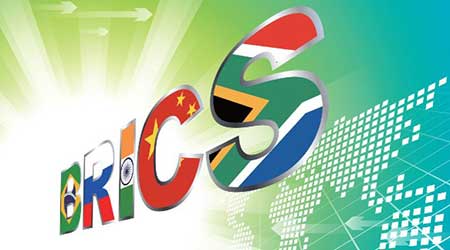Date: 25/05/2023
Relevance: GS-2: Bilateral, regional and global groupings and agreements involving India and/or affecting India’s interests, India and its neighbourhood- relations.
Key Phrases: BRICS, Non-Aligned Movement, ASEAN, SAARC, Ukraine Conflict, Contingent Reserve Arrangement, IBSA, UNSC, COVID.
Context:
- Although BRICS may have lost some of its allure; a substantial lineup of nations eagerly awaits membership.
Introduction
- Multilateral groupings have a fascinating trajectory, often experiencing
periods of prosperity followed by decline.
- The Non-Aligned Movement (NAM) and G-77 were influential during the Cold War but lost their relevance over time.
- The South Asian Association for Regional Cooperation (SAARC)
summit ended in 2014, yet its secretariat continues to operate.
- Similarly, despite policy divergences, the Association of Southeast Asian Nations (ASEAN) persists, issuing lengthy communiqués.
- The case of BRICS, an acronym for Brazil, Russia, India, China, and
later South Africa, exemplifies this paradox.
- While it may have lost some of its lusters due to recent global events, the group still attracts numerous nations eager for admission, highlighting the intriguing nature of BRICS.
The Balance Sheet of BRICS
- Initially conceived as BRIC, a grouping of Brazil, Russia, India, and
China, the concept gained popularity two decades ago.
- However, two of its components, Brazil and India, joined forces with South Africa to establish IBSA (India, Brazil and South Africa) in 2003.
- China, desiring to be part of the group, managed to secure South
Africa's support and effectively transformed BRIC into BRICS.
- Subsequently, BRICS overshadowed the IBSA forum, which has been unable to hold a summit since 2011.
- In contrast, BRICS has successfully conducted 14 summits over the past 13 years.
- BRICS has focused on both geopolitical and economic dimensions,
projecting a non-western view on key global and regional issues.
- This united stance has contributed to the world's progression towards multipolarity, countering the dominant influence of the West.
- Economically, BRICS launched initiatives such as the New Development Bank, which committed substantial funding to numerous projects, and the Contingent Reserve Arrangement, a financial mechanism safeguarding against global liquidity pressures.
- Additionally, a comprehensive program to enhance trade and investment cooperation among member countries was established. However, the group's negative tendencies began to surface.
- The expectation that China and Russia would fully support the IBSA
trio's bid for United Nations Security Council membership was met
with disappointment.
- Instead, BRICS communiqués merely express support for the aspirations of Brazil, India, and South Africa to play a greater role in the UN, underscoring the group's diplomatic limitations.
The Challenges and Imbalance
- The second decade of the 21st century witnessed China's remarkable economic rise and growing military assertiveness, which upset the internal balance within BRICS.
- The consolidation of Russia-China cooperation following the Ukraine conflict, South Africa's economic struggles leading to increased dependence on China, and Brazil's political shifts from left to right and back again with the return of Lula da Silva as President have created new tensions within the group.
- Beijing's proposal for a common currency for intra-BRICS trade is symptomatic of these internal challenges.
An Admission Rush
- Despite its internal troubles, BRICS finds itself in the paradoxical situation of having 19 countries eager to join its ranks.
- The regions from which these countries hail are Latin America (Argentina, Nicaragua, Mexico, and Uruguay), Africa (Nigeria, Algeria, Egypt, Senegal, and Morocco), and Asia (Saudi Arabia, the United Arab Emirates, Türkiye, Syria, Iran, Afghanistan, Indonesia, Thailand, Kazakhstan, and Bangladesh).
- The motivations behind this surge of interest in BRICS membership vary. China sees expansion as a strategic device to extend its global influence, while others fear missing out on the benefits of belonging to a visible club.
- For many countries, BRICS may represent the only available option,
as other groupings remain closed to them.
- Furthermore, the clamour for admission reflects prevailing anti-western sentiments and the desire to create a significant forum for the Global South.
The Future of BRICS
- The upcoming BRICS summit, scheduled to be hosted by South Africa,
presents an opportunity to discuss expansion and the criteria for new
members.
- Preparatory meetings of Foreign Ministers and National Security Advisers will undoubtedly deliberate on this subject.
- Three options are on the table: a mega expansion raising membership to 21, surpassing the G-20; limited admission of 10 new members, with two existing members supporting each new entrant; or admission of only five new members, with one existing member supporting each, and no vetoes exercised by the remaining four.
- India favours a gradual expansion based on agreed criteria. If the third option garners consensus, Argentina, Egypt, Indonesia, the UAE, and Bangladesh are the most likely candidates for admission.
- While the physical attendance of BRICS leaders at the summit is
uncertain due to legal obligations related to the International Criminal
Court, a digital summit may be the more likely scenario.
- During their discussions, the leaders should reflect on strengthening BRICS and addressing internal imbalances.
- They should also anticipate that new members will seek to rename the group, potentially shaping a more promising future for the organization.
Conclusion
- The paradox of BRICS lies in its simultaneous loss of lustre and the
eagerness of many nations to join its ranks.
- Despite recent challenges and internal tensions, the BRICS continues to attract attention and interest from countries worldwide.
- The group's accomplishments in projecting a non-western view on global issues and fostering economic cooperation are notable. As BRICS navigates its new pathway, expansion and the incorporation of new members are under consideration.
- The future of the organization hinges on how it adapts, addresses internal imbalances, and harnesses the potential contributions of aspiring member nations.
Source: The Hindu
Mains Question:
Q. What is your perspective on the paradoxical situation of BRICS, where it seems to be losing its shine while still garnering enthusiasm from numerous nations to become part of it? (150 words)







